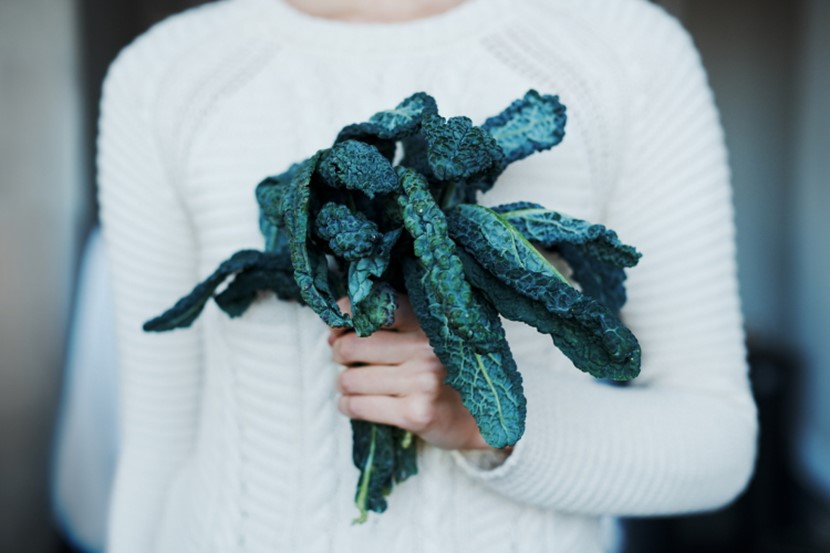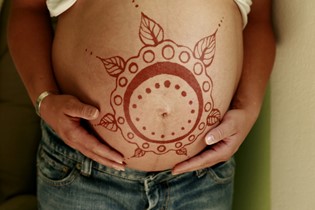Superfoods: foods for life

Are some foods super? Nutritionist Anna Hansen, weighs in on what to eat to feel better, boost immunity and have more energy.
In recent years, “superfood” has become a popular term around the dining table. But what are super foods, and how did they earn such a lofty title? Generally speaking they are foods that can either improve our health or reduce the risk of disease. They are high in antioxidants, vitamins or other nutrients.
However, it’s worth keeping in mind that “superfood” is a marketing term, and should not lead us to believe that eating copious amounts of one or two particular foods is going to change the state of our health. But if the term draws us towards foods that are great for us in the context of a balanced diet, then well and good. The truth is we need our families to be eating the widest possible variety of food direct from nature, as every food in its natural state offers a promise of goodness.
Here are some of my favourite foods that happen to be particularly super in their nutritional promise. They are all well worth incorporating into your weekly meal plan.
Winter immunity-boosting foods
Kale
Kale, a beautiful green leafy vegetable with incredibly high nutrient content, has stolen the limelight recently, and for good reason. It is full to the brim with promise: a great immune booster also offering support for bones and joints. It is also great for heart health. One serving can give you 300% of the recommended daily intake of vitamin C and vitamin A. Research suggests that vitamin A helps the proteins that regulate cell to cell communication, which is the foundation of the immune system, and vitamin A may also help keep the respiratory system healthy. This wonderful food also offers a whopping amount of vitamin K which is needed for healthy bones. The main phytochemicals in kale are the carotenoids associated with protecting eye health. It also offers antioxidant and anti-inflammation properties to fight disease – including cancer.
If you are a smoothie drinker then this is a great leafy green to add into your breakfast drink, and steaming kale is a cooking method that will ensure you get the best out of this wonderful food.
Lemons
Lemons are one of my favourite citrus fruits for several reasons. Like all citrus fruits, they are full of vitamin C, a powerful antioxidant which boosts our immune system. Large doses of vitamin C can shorten the length of a cold and alleviate the symptoms. It’s also great for our skin and aids in repairing cells throughout our bodies. Lemons, although acidic, have an alkalising effect on the blood, which is a key to good health. It also aids the liver in the natural detox process.
Fresh lemon juice in warm (not boiling) water is great first thing in the morning to stimulate digestion and get the gastric juices working well, thus helping with indigestion, heartburn and bloating.
Garlic
We have all heard old wives’ tales about garlic being a cure for everything and recent research shows there is some truth to the rumours. Garlic contains properties that destroy bacteria and protect against heart disease. The health benefits can be attributed to allicin, an organic compound that gives garlic its odour and many of its antioxidant properties. Studies have found that those given a supplement containing allicin were less likely to develop a cold, and when they did get sick they were unwell for a shorter time.
After chopping your garlic, let it stand for 10-15 minutes before cooking. The chopping activates an enzyme which releases beneficial compounds. The shorter the cooking time the bigger the benefit. Raw garlic is also worth adding to dressings and hummus.
Broccoli
Another of my all-time favourite immune boosters – trusty broccoli. One serving of broccoli will give you plenty of vitamin C and vitamin K, among other things. It also contains small amounts of vitamin A, fibre, folate and the B vitamin, riboflavin. Phytochemicals, particularly glucosinolates, carotenoids and phenolic compounds are also abundant in broccoli.
One of the reasons there is almost always broccoli in my fridge is that it’s one of those veges that my kids will eat without any negotiation and it takes just a few minutes to steam. Steamed broccoli has cholesterol lowering properties that are still present when raw, yet once steamed the components that help lower cholesterol do a better job.
Raw beetroot
Beetroot is one of the most antioxidant-rich vegetables available to us with very high anti-inflammatory properties. It contains a unique group of red pigments called betalains. This is an energising vegetable that is absolutely full of goodness. Recent studies have shown that drinking beetroot juice daily increases endurance athletes’ stamina in different sports, as the nitrate in the beetroot (good nitrates that is, not the nasties we need to avoid) cause the arteries to widen and take more oxygen and nutrients around the body. As a busy parent with a hectic schedule, I notice a boost in energy straight away after a beetroot juice. I recommend this vegetable raw in salads or juiced.
Grass-fed beef and lamb
If you are feeling lethargic you may need a boost of iron, vitamin B12 and zinc. Red meat is rich in these things. Eating iron-rich foods can combat lethargy and boost your immune system. Zinc is important for the production of our immune cells, and also ensures our white blood cells function well in the fight against infection. Your iron or zinc levels may be low if you are feeling lethargic, so it’s worth considering a meal of red meat. Vitamin B12 gives you energy also. This is particularity important if you are pregnant or breastfeeding. Two or three serves of red meat a week is enough for most people. Fish, poultry, legumes and green leafy veges are also sources of both iron and zinc.
Quinoa
This is my all-time favourite “grain” and its popularity has grown hugely over the last few years. Quinoa was discovered by the Incas in South America over 3000 years ago and these days it has earned a reputation as a “super grain”. It is in fact technically a seed not a grain, which explains it’s lovely nutty flavour. This wonder food is gluten-free, high in protein (contains all nine essential amino acids), contains iron, phosphorus, magnesium and a decent amount of calcium, antioxidants and vitamin E – all in all great news if you are vegan or have a gluten-free or dairy-free diet. This is fabulous as the main ingredient in a nourishing salad or as part of a main meal instead of pasta or couscous. By replacing refined carbohydrates with quinoa in a meal you will ultimately gain more energy.
Sunflower seeds, flax seeds, chia seeds and walnuts
Nuts and seeds in general are powerhouses of promise. Sunflower seeds and flax seeds are a great source of Thiamin (vitamin B1), which helps turn food into energy. Flax, chia seeds and walnuts are wonderful sources of omega 3 fatty acids, which fight inflammation and infection. Omega 3 is also thought to protect against depression and heart disease. Vitamin E is another powerful antioxidant found in nuts and seeds, which also aids the immune system. A handful of nuts and seeds is a great snack and a great addition to a salad.
Cacao
Cacao is the raw version of cocoa. Cacao has been touted a superfood thanks to its high antioxidant properties, which is why dark chocolate has gained a great name for itself! In small amounts, cacao (in butter, nib and powder form) is presumed to be much better for us than the processed cocoa powder, which is devoid of a lot of nutriets. I use cacao powder to make chocolaty sugar-free treats.
By replacing sugary snacks with tasty foods sweetened with dried fruits, such as apricots or dates, you are doing your body a favour which translates into increased energy in the long-term.
There you have it – some of my favourite foods, all readily available and easy to prepare and cook. In the world of nutrition the key words are actually “whole” and “variety”, especially when it comes to plant foods (vegetables, fruits, nuts and seeds, herbs and grains).
Bon appetit!
Anna Hansen (BSc, Human Nutrition and Psychology) is a nutritionist with a holistic approach, alongside being a mum to three small children. For more of her super nutrition advice and recipes, check out: facebook.com/AnnaHansenLoveFood

AS FEATURED IN ISSUE 26 OF OHbaby! MAGAZINE. CHECK OUT OTHER ARTICLES IN THIS ISSUE BELOW

















